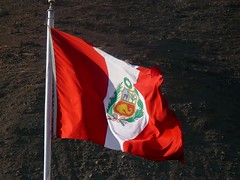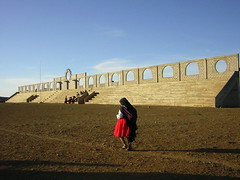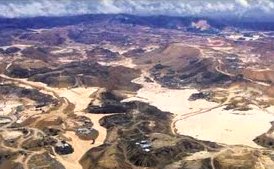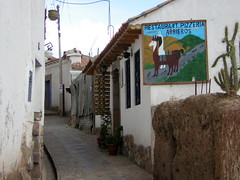Peru and Coca
There has been much in the news recently about protests from Peru’s coca farmers and forced eradication by the Government.
Peru is the second largest exporter of refined cocaine in the world, and due to its size probably the largest producer of the coca leaf. Peru had a serious problem in the 1980s and 1990s with cocaine production as the Shining Path terrorist group began using the drug as a means to fund their war against the Peruvian State. Since then, production levels had became less of an issue, and what coca was grown was more often used for local medicinal and cultural needs – not all, not most but a slightly larger part (Ratio 9:100). The problem had died down as funding that was provided to Peru by the United States was put to use and Peru itself stepped up its hunt for traffickers. There is at least one person caught leaving the country with bags full of cocaine every day from Lima’s international airport. Hospitals in close proximity are reportedly on the brink of financial collapse due to having to remove swallowed capsules of cocaine and provide medical care to these drug mules. Even I fit the profile and once had my bags searched for hidden drugs.
The current problems seem to have been kicked off by the Free Trade Agreement that Peru is eager to sign with the United States, and perhaps in part by the US cutting off the funding for eradication efforts – funding that was accompanied by guidance that may now not be being followed by President Alan Garcia – known for creating tension with his hard-line tactics.
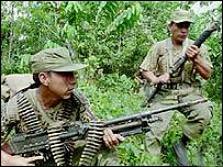 In what may have been an effort to please the United States so that it may finally sign the agreement Peru hopes will bring a flood of jobs, investment and export opportunities, Alan Garcia had increased efforts to go after illegal coca farms used exclusively for making cocaine. These efforts highlighted the problems caused by coca farmers and their support of drug cartels and terrorists.
In what may have been an effort to please the United States so that it may finally sign the agreement Peru hopes will bring a flood of jobs, investment and export opportunities, Alan Garcia had increased efforts to go after illegal coca farms used exclusively for making cocaine. These efforts highlighted the problems caused by coca farmers and their support of drug cartels and terrorists.
In late March the army raided a clandestine production facility in the Ayacucho jungle run by a Colombian drug cartel that produced 1 ton of cocaine each week. As they destroyed and confiscated chemicals and equipment, local villagers turned on them and attacked them.
Around the same time in San Martín and Huanuco – the source of most of Peru’s cocaine thanks to support from the remnants of the Shining Path terrorist group – eradication efforts had to be suspended due to huge protests by local people. Locals blocked roads, burned cars and attacked police and army units. In an effort to foster peace Agriculture Minister Jose Salazar agreed the temporary suspension of eradication, but Alan Garcia overruled this a few days later (some suspect Washington was displeased).
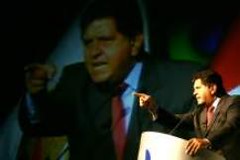 As renewed protests continued in the first days of April, Alan Garcia stated: “The Peruvian government will not give up nor budge an inch against threats versus the expansion of illicit coca plant cultivations”, at the Inter-American Forum on Security and Human Coexistence. He then declared that he has authorised the bombing of coca fields and drug-cartel landing strips. “If we don’t kill off the danger of expanding narcotics operations immediately, then Peru may very well face insurgency problems as large as what is happening in Colombia,” Garcia stated. “Use A37 attack planes, bomb and gun down airports and maceration wells. And at the same time, take out the benefactor, the drug baron,” he emphasized. He said he did not want Peru to be put on an international ‘black list’ of drug suppliers, but softened his statements by saying he was sure the distinction could easily be made between illegal cultivation and farms producing coca for cultural use.
As renewed protests continued in the first days of April, Alan Garcia stated: “The Peruvian government will not give up nor budge an inch against threats versus the expansion of illicit coca plant cultivations”, at the Inter-American Forum on Security and Human Coexistence. He then declared that he has authorised the bombing of coca fields and drug-cartel landing strips. “If we don’t kill off the danger of expanding narcotics operations immediately, then Peru may very well face insurgency problems as large as what is happening in Colombia,” Garcia stated. “Use A37 attack planes, bomb and gun down airports and maceration wells. And at the same time, take out the benefactor, the drug baron,” he emphasized. He said he did not want Peru to be put on an international ‘black list’ of drug suppliers, but softened his statements by saying he was sure the distinction could easily be made between illegal cultivation and farms producing coca for cultural use.
There was wide support for Garcia’s strong words, even coming from Peruvian congresswoman and coca farmer representative Elsa Malpartida who described them as “perfect”, so long as the distinction was made between illegal and legal production. This surprised many of her supporters, some of which are involved in illicit production and were hoping for more support. She said efforts should be made too against the producers of the chemicals used in cocaine production that destroy the Amazon ecosystem and that traffickers in “suits and ties” should also be targeted.
In the coming days protests again raged in San Martín, roads were blocked and tyres were burnt. A 400 meter stretch of highway, near the district of Nuevo Progreso, was blocked with boulders, logs, and dirt. The highway is one of the few ways out of San Martín and connects the central jungle cities of Tocache with Juanjui, Tarapoto, and Tingo Maria. It was on the 12th of April that drug traffickers gave their response to Alan Garcia’s order of bombing illegal farms. Snipers working for Peruvian drug lords murdered a worker who was performing coca eradication operations in Alta Huallaga, close to Huanuco. Five Peruvian anti-drug agents who were providing security were also shot and wounded during the attack. Some 176 workers and 95 anti drug agents were conducting eradication operations when four snipers who were strategically located and camouflaged in the highland jungle vegetation killed 36 year old Edgar Ricopa Yahuarcani. Coca farmers then declared an indefinite strike and road block. Additional elite police were sent to the area to maintain order.
 On the 16th of April, as protest grew in Huanuco, President Alan Garcia announced that there would be no negotiation with those he believes are being sponsored by Peru’s powerful drug traffickers, who requested talks as part of their demands. “It is evident that drug lords are orchestrating the strike. Just as in Colombia where drug lords have purchased the protection of para-military guerrilla groups to protect their illicit operations, they have done same with groups of coca farmers who run around protesting, ‘let me grow whatever I feel like growing’ and I am here to tell you that is not how it works,” stated the Peruvian leader.
On the 16th of April, as protest grew in Huanuco, President Alan Garcia announced that there would be no negotiation with those he believes are being sponsored by Peru’s powerful drug traffickers, who requested talks as part of their demands. “It is evident that drug lords are orchestrating the strike. Just as in Colombia where drug lords have purchased the protection of para-military guerrilla groups to protect their illicit operations, they have done same with groups of coca farmers who run around protesting, ‘let me grow whatever I feel like growing’ and I am here to tell you that is not how it works,” stated the Peruvian leader.
The 17th of April saw the arrest of two known Shining Path terrorists Samuel Rodriquez Amasifuen and Humberto Chavez Sanchez in San Martín as they were due to meet in their home with coca farmers. In the home police found guns, a large supply of ammunition and Shining Path manuscripts and propaganda. They also discovered detailed plans which mapped out which roads to be blocked during the protests. The plans involved ordering protesters to dig trenches and build barricades on the Aucayacu-Tocache and Tingo Maria-Huanuco highways. The documents that were written by three terrorists known as ‘JL’ ‘Lee’ and ‘Piero’ also contained plans to attack and kill police at various police stations in the area.
And so now, at this stage, we wait to see what happens next.
Tags: 1980s, coca, crime, farmers, free trade, garcia, huanuco, san martin, shining path



